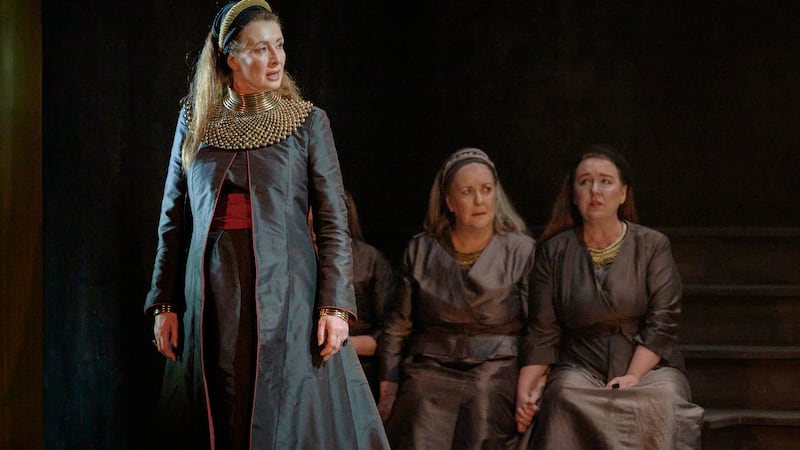HELLO to ould ones and youngsters alike, welcome to the Bluffer’s Guide to Irish.
Now, the Bluffer isn’t great one for cumha - nostalgia but looking through grianghráfanna - photographs of old Belfast on facebook does help him down memory lane or as we say in Irish ar bhóithrín na smaointe.
Everybody’s cuimhní - will be different depending on where they grew up, amuigh faoin tuath - out in the country or i lár na cathrach - inner city.
Is cuimhin liom an t-am - I remember the time is how some old-timer will start off waxing lyrical about leithris taobh amuigh - outside toilets, jam sandwiches and trolley buses or trams depending on their age.
Chips were made in a panna sceallóg - a chip pan filled with geir rósta - dripping which filled you up as a lot of activities for the young would have been outdoors, ranging from playing 23-a side football – these were pre-contraception days – until a certain policeman wouldn’t appear on his motorcycle to confiscate your ball.
There were ball games such as Queenio Queenio, handball against a suitable wall (even ones with windows) and the incredibly non-PC game of Cowboys and Indians while the young girls wore gender=specific nurses uniforms and put the latest fashions on the cut-out babes in the Bunty and the Judy.
There was kribby/kerby, guiders, a game using elastic bands called French skipping.
The Bluffer spent his holidays in Bun na hAbhna - Waterfoot on the Antrim coast where uachtar reoite - ice cream, a Fanta orange and a packet of Perri crisps were among the highlights.
The parents were seen sporadically as we somehow found enough to do to fill in the hours while the adults drank Guinness and sang folk songs until closing time, 10pm back then.
The Bluffer thinks that kids today are heavily stereotyped and complaints about cluichí ríomhaire - computer games and gutháin póca - mobile phones are over-played. but kids always got used to the latest technology, whether it was listening to stásiúin bhradacha raidió - pirate radio stations the raidió trasraitheora - transistor radio in the 1960s to the Walkman which first came out in 1979.
The tech has certainly moved on since then and today’s young people are just carrying on from what their parents did generation before.
Na meáin shóisialta - social media have certainly exposed them to a greater amount of bullying but at the same time, it has given them the chance to express themselves to each other than ever before.
Children of the 1960s had to make do with three television channels on the television, few stations that played the music they wanted to hear with only kids TV.
The cinemas were veritable flea-pits, special treats consisted of chips (9d from the local chippy) so it was street games, riding round on streets devoid of traffic,
People who think the world is a dangerous place now don’t remember 1961’s Bay of Pigs ncident when the world could have gone up in one big mushroom cloud.
CÚPLA FOCAL
cumha(cooee) - nostalgiagrianghráfanna(grayngraafana) - photographsar bhóithrín na smaointe(ar woyhreen na smweentcha) - down memory lanecuimhní(kivnyee) - memories amuigh faoin tuath(amwee fween tooa) - out in the country i lár na cathrach (laar na cahrakh) - inner cityIs cuimhin liom an t-am (is kivin lum un taam) - I remember the time leithris taobh amuigh(lehrish teev amwee) - outside toilets panna sceallóg(panna shkyallawg) - a chip pan geir rósta (gayr rawsta) - drippingBun na hAbhna(bun na hoe-na) - Waterfootuachtar reoite (oakhtar roytcha) - ice creamcluichí ríomhaire (clihee reeoowera) - computer games gutháin póca (goohaan pawka) - mobile phonesstásiúin bhradacha raidió(staashoon wraadaha raadio) - pirate radio stations raidió trasraitheora(raadeeo trasreehora) - transistor radio Na meáin shóisialta (na maan hoesheealta) - social media


